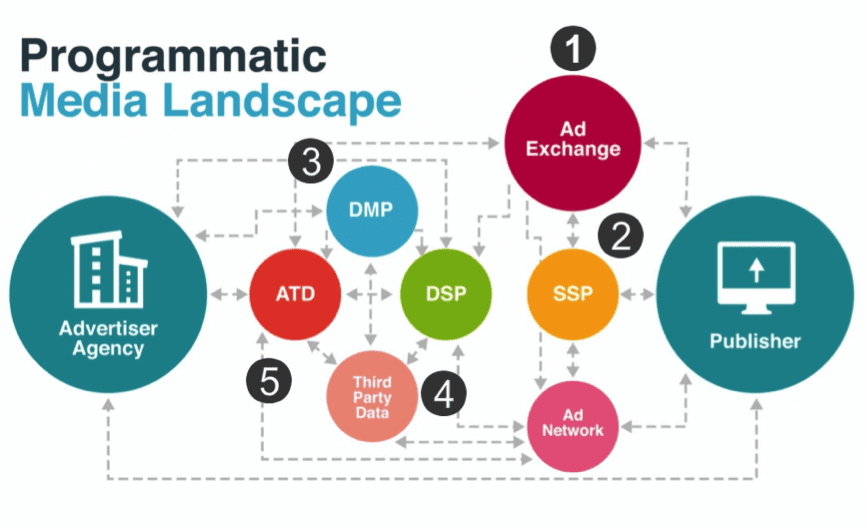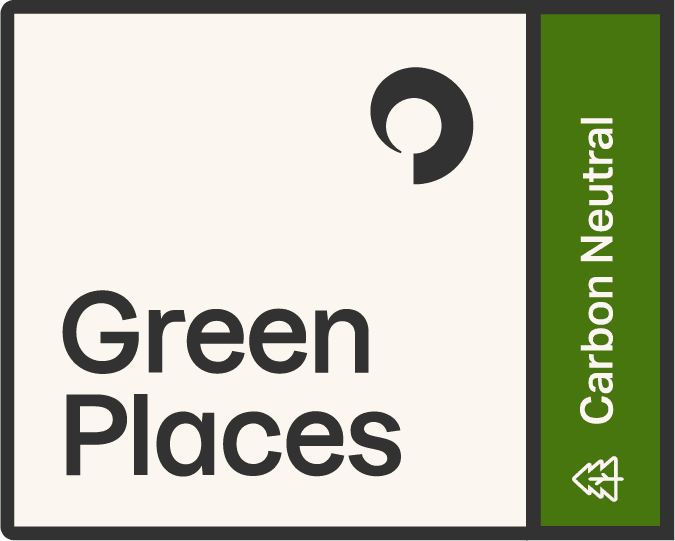Programmatic advertising has seen exponential growth over the last ten years and is now implemented in most media strategies. Estimations by eMarketer state that by 2021 almost 88%, or $81 billion, of all US digital display ad dollars will transact programmatically. To have a better understanding of how programmatic works and why it’s become increasingly popular, we need to know what it is.

In short, programmatic advertising automates the buying and selling of ad inventory through data intelligent software. This purchasing of online ad space happens in real-time and will show your ads to the audience that aligns best with your target. In comparison, traditional way of media buying is a drawn out, manual process involving RFPs, manual insertion orders and human negotiations.
Ad exchange: A digital marketplace that enables advertisers and publishers to buy and sell advertising space, typically through real-time auctions. Advertisers can easily purchase ads across a range of sites at once, opposed to negotiating buys directly with specific publishers.
Ad network: Technology that collects inventory from a variety of publisher sites and sells it on a fixed CPM basis to advertisers. Ad networks can offer advertisers a better opportunity to reach their target audience while also allowing publishers to sell their inventory more effectively.
Ad server: Used by ad networks, publishers, advertisers, and ad agencies to manage, run, and report on their advertising campaigns. There are two types of ad servers: first-party ad servers (publisher) and third-party ad servers (advertiser).
- First-party ad servers: Allows publishers to manage inventory on their websites, display ads sold via direct deals with advertisers, sell remnant (unsold) inventory to ad networks and supply-side platforms, and report on performance.
- Third-party ad servers: Designed to help advertisers store their ads, measure campaign performance across several publishers, and verify metrics against reports from publishers, such as impressions and clicks.
Data Management Platform (DMP): A data management platform is a data warehouse that collects and organizes data from a variety of sources and makes it available to other platforms. With a DMP, marketers can access and manage data like mobile identifiers and cookie IDs to create targeting segments for digital advertising campaigns. Some vendors that sell DMP technology are: Adobe Audience Manager, Lotame, Salesforce DMP, Oracle BlueKai, CoreAudience, Amobee Marketing Platform, etc.
Demand-side platform (DSP): A technology platform used to manage, purchase and optimize programmatic inventory from multiple ad exchanges through one interface. Inventory can be purchased through real-time bidding or programmatic direct.Vendors that currently sell DSP technology include: MediaMath, BrightRoll, AppNexus, Amazon, DoubleClick, etc.
- Real-Time Bidding (RTB): allows advertisers to purchase ad space (aka inventory) on an impression-by-impression basis via auctions on the open market, meaning any advertiser can bid for and purchase ad space on a publisher’s website.
- Open Exchange – An open exchange is defined as an open digital advertising marketplace for aggregated inventory from multiple partners where buyers can bid either manually or programmatically to purchase ad impressions. Ad Inventory on an open exchange allows all buyers the opportunity to purchase the same inventory.
- Private Exchange – Alternatively, most open exchanges now offer the option to purchase ad inventory from a private marketplace. Private exchanges are more controlled and provide buyers with more insight on specifically where ads will be placed.
- Programmatic
Direct: Done on a one-to-one basis, advertisers and publishers agree on the
terms of the media campaign, and then use AdTech platforms to automate the
delivery and reporting of the campaigns.
- Programmatic Guaranteed – Allows buyers access to specific publisher audiences they want to target for a campaign at a larger scale and on a more automated basis than walled-off private marketplaces allow.
- Preferred Deal – Allows individual buyers to negotiate fixed-price, first-look deals with sellers. The buyer gets exclusive access to inventory before it is made available to everyone in the private marketplace, meaning that the buyer can check the inventory before having to purchase it. The CPM is generally higher than regular programmatic and on par with direct sales because advertisers are seeking impressions based on the specific data available or gathered by the advertiser previously.
Dynamic Creative Optimization (DCO): An ad technology that creates personalized ads based on user data. This can be used in remarketing as an advertiser shows an ad based on specific website or product pages.
Supply-side platform (SSP): Alternative to an ad network, offering similar functionality, but with access to a different kind of inventory and delivery method. SSPs are used by publishers to manage, sell and optimize available ad inventory. Publishers can monetize their website and/or app by selling display, video and native ad inventory.
The digital landscape is ever changing and that’s no different for programmatic buying. The technological advancements continue to allow marketers to automate serving in a smarter, more efficient manner. You can easily reach your target audience with the right message at the right time.
Now that you have a better understanding of how programmatic works, what do you think? Leave a comment below!









